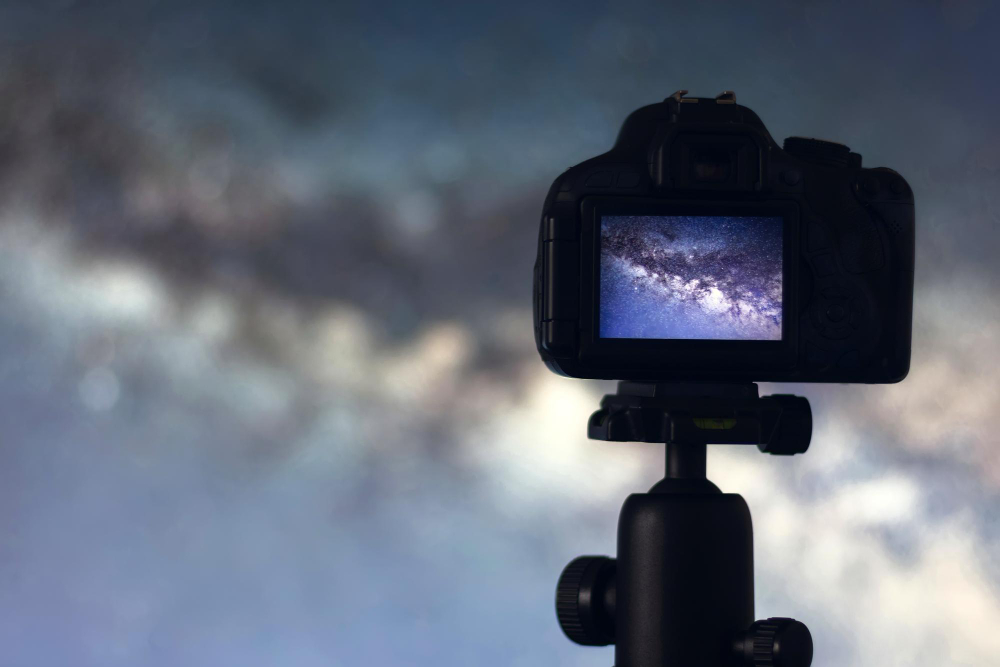Astrophotography is a captivating branch of photography that allows us to peer into the depths of the universe and capture its awe-inspiring beauty. It combines the technical precision of photography with the fascination for celestial objects, offering a unique blend of art and science. By venturing into the night sky with our cameras, we can unlock a world of breathtaking wonders, from mesmerizing star trails and stunning nebulae to distant galaxies millions of light-years away.
Mastering the Night: Essential Equipment and Techniques for Astrophotography
To embark on an astrophotography journey, it’s essential to have the right equipment and master specific techniques. A sturdy tripod, a camera with manual controls, and a wide-angle lens are fundamental tools for capturing the vastness of the night sky. Additionally, understanding exposure settings, long exposure techniques, and utilizing tools such as remote shutter releases and intervalometers are crucial for capturing the subtle details and ethereal beauty of astronomical objects. Mastering these techniques empowers photographers to transform the night sky into their own celestial canvas.
Chasing Darkness: The Art of Finding Ideal Stargazing Locations
Finding the perfect location for astrophotography involves seeking out dark skies away from light pollution. National parks, remote countryside areas, and high-altitude locations often provide the best conditions for stargazing and capturing the cosmos. Planning your shoot based on celestial events like meteor showers or astronomical phenomena such as eclipses adds an extra element of excitement and intrigue to your astrophotography endeavors. By venturing into the depths of darkness, you can capture celestial wonders that are hidden from urban cityscapes.
Guided by the Stars: Navigating the Night Sky for Astronomical Subjects
Navigating the night sky and identifying celestial objects can be challenging for newcomers to astrophotography. However, there are numerous resources available to assist in this endeavor. Mobile apps, star charts, and online databases provide valuable information on the positions and visibility of stars, planets, and constellations. Learning to read the night sky not only helps photographers locate their desired subjects but also deepens their appreciation for the interconnectedness of the universe.
Capturing the Cosmos: Techniques for Astrophotography Subjects
Astrophotography encompasses a wide range of subjects, each requiring specific techniques to capture their unique beauty. From capturing the radiant glow of the Milky Way to the intricate details of the moon’s surface, different approaches and equipment are needed. Wide-angle lenses excel in capturing expansive nightscapes, while telescopes and specialized lenses allow for detailed shots of planets and deep-sky objects. By honing techniques specific to each subject, photographers can unlock the true essence and splendor of the cosmos.
Post-Processing the Universe: Enhancing and Sharing Your Astrophotography
Post-processing is an integral part of astrophotography, allowing photographers to refine their images and bring out the hidden details of the cosmos. Techniques such as stacking multiple exposures, adjusting color balance, and reducing noise help enhance the final result. Additionally, astrophotographers can create stunning composite images by blending multiple shots or combining different wavelengths of light. Once the editing process is complete, sharing your astrophotography with the world through online platforms and galleries not only allows others to appreciate the magnificence of the universe but also fosters a sense of community among fellow stargazers.
Beyond the Stars: The Lifelong Journey of Astrophotography
Astrophotography is a never-ending journey of exploration and discovery. As technology advances and our understanding of the universe deepens, new opportunities and challenges arise for astrophotographers. From capturing elusive phenomena like auroras and comets to pushing the limits of equipment to capture ever-fainter objects, the pursuit of astrophotography is a continuous quest for pushing boundaries and capturing the wonders of the cosmos.
Moreover, astrophotography offers a profound connection between science and art, bridging the gap between the analytical and the creative. It allows us to appreciate the vastness of the universe while indulging in the artistic interpretation of celestial beauty. Through our lenses, we can capture not only the physical characteristics of astronomical objects but also the emotions and sense of wonder they evoke within us.
